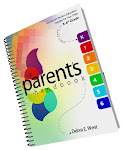Teaching Our Children: 6-8 Years Part I
1. Handwriting involves visual, motor, sensory,and perceptual skills. If your child is having a lot of trouble forming letters and struggles with written assignments, make sure you raise your concerns with the teacher to see if an evaluation by an occupational therapist is appropriate.
2. Most children need to be taught to write actively, lie the way you teach them to tie shoes or play the piano. Children who are given worksheets often make the same mistakes over and over. Parents can make up the gap at home.
Invisible Ink
Trace letters and simple words on your child's back and see if he/she can guess what you're writing. Then, swap and have your child "write" a letter or word on you.
Picture This
Get out the markers or crayons and draw a single capital letter on a piece of unlined paper. The challenge is to make the chosen letter part of a bigger picture. To start, capital I into a butterfly or transform an O into an octopus. As your child decorates the letters make sure he/she is focusing on the shapes.
Sweet Treat
Buy or bake some sugar cookies and assemble a bunch of icing in tubes. Call out letters and have your child write them on the cookies. Then have your child arrange the cookies into short words.
Outsider Art
Using sidewalk chalk, have your child write a giant not that could be seen in outer space, then have him/her make teeny-tiny one for ants to read.









0 comments:
Post a Comment